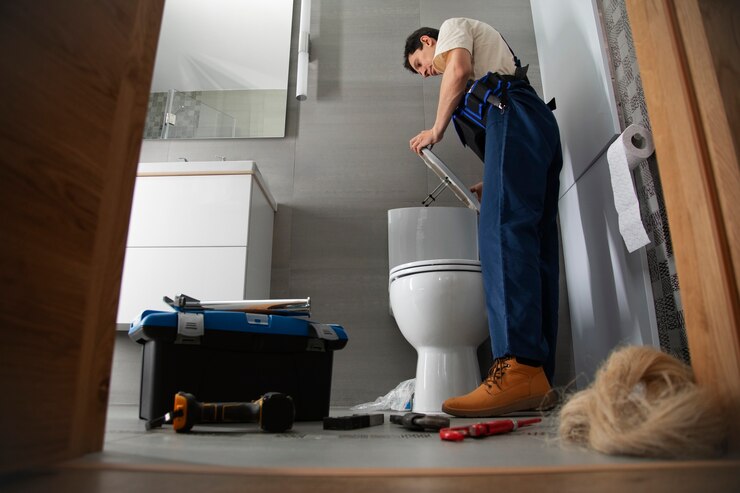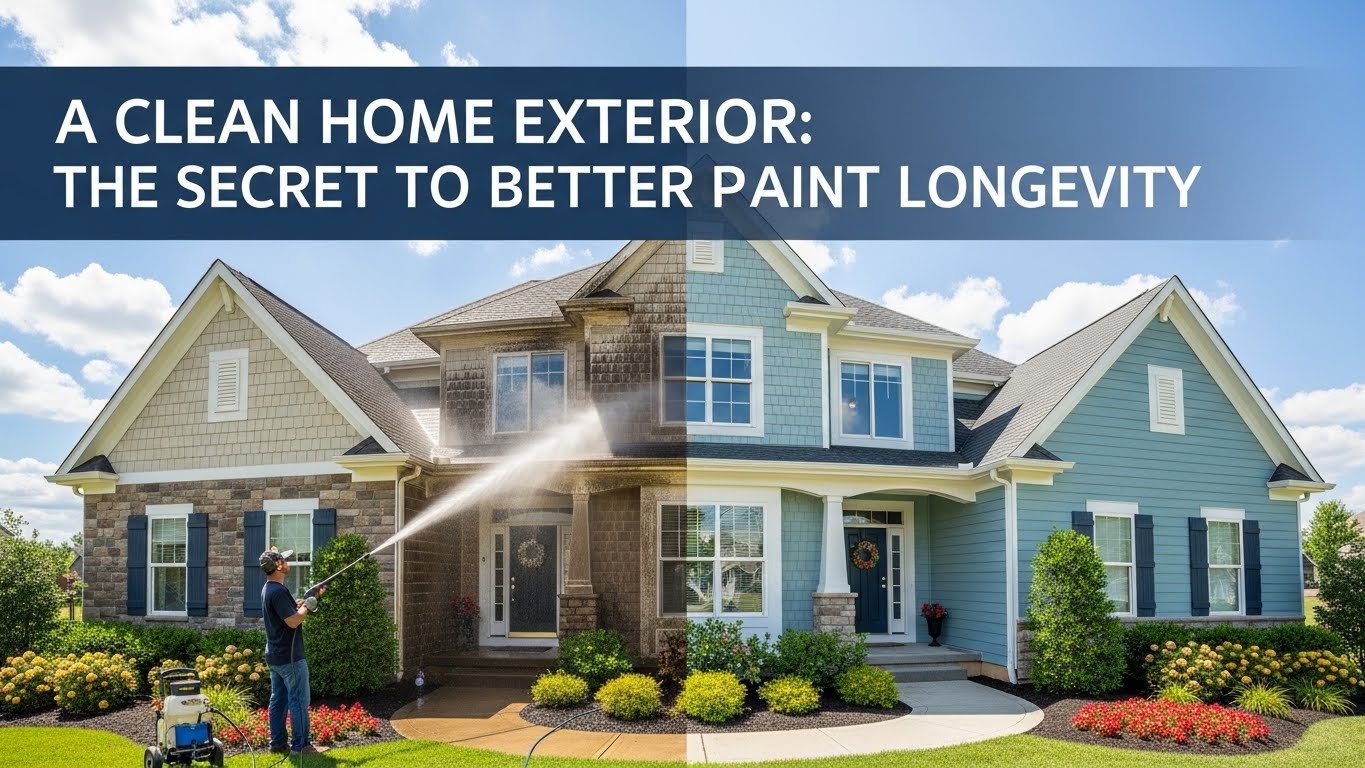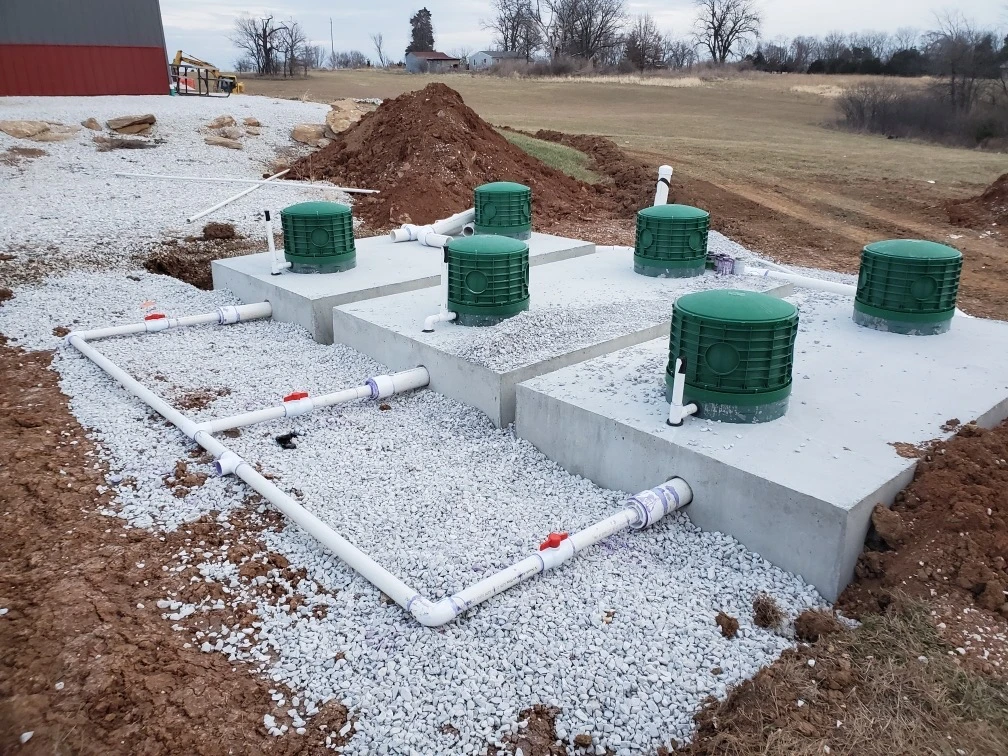Home improvement
Common Signs Your Toilet Needs Repair or Replacement

Your toilet is one of your home’s most frequently used fixtures, yet it often goes unnoticed until it malfunctions. While it’s designed for durability, even the most well-maintained toilets can exhibit signs of wear and tear over time. Ignoring these signs can lead to more severe issues, including water damage and costly repairs. By understanding the common indicators that your toilet may need repair or replacement from Refined Home Services, you can take proactive steps to ensure your plumbing system continues running smoothly. We will explore these signs to help you identify when to address potential problems.
Constant Running Water: A Sign of Internal Malfunction
A toilet that constantly runs, even after flushing, is one of the most common signs that it may need repair. The sound of running water often indicates an internal problem within the toilet tank. This issue is typically caused by a faulty flapper valve, which controls water flow from the tank to the bowl. When the flapper valve becomes worn or damaged, it fails to seal properly, allowing water to leak into the bowl continuously. At the same time, this may be a minor inconvenience. Still, a constantly running toilet can waste a significant amount of water—up to 200 gallons per day—leading to higher utility bills and unnecessary water waste.
Sometimes, the problem may be more complex, such as a malfunctioning fill valve or an issue with the float mechanism. The fill valve controls the amount of water that refills the tank after each flush. If it’s not functioning correctly, the tank may not fill to the appropriate level, causing the toilet to run continuously. Additionally, if the float, which controls the fill valve, is set too high or too low, it can cause similar issues. Addressing these problems early can prevent further damage to your toilet and plumbing system, potentially saving you from needing a complete replacement.
Frequent Clogs: A Warning Sign of Aging or Damaged Pipes
Another telltale sign that your toilet may need attention is frequent clogs. While occasional clogs are typical, especially if too much toilet paper or non-flushable items are accidentally flushed, frequent clogs can indicate a more serious issue. Persistent clogging can indicate that your toilet is old and inefficient, mainly if it’s an older model with a weaker flushing mechanism. Older toilets tend to use less water per flush, which can result in incomplete flushing and a higher likelihood of clogs.
In some cases, frequent clogs may point to a problem with your home’s plumbing system rather than the toilet itself. If tree roots have invaded your sewer lines or if there’s a blockage in the pipes, it can cause your toilet to back up more often. This issue requires professional attention, as it can lead to more severe plumbing problems if left unaddressed. Regular clogs should not be ignored, as they can be a sign that your toilet needs repair or replacement or that a more significant issue with your plumbing needs to be resolved.
Cracks in the Toilet Bowl or Tank: Structural Damage That Requires Immediate Attention
Visible cracks in the toilet bowl or tank indicate that your toilet may need to be replaced. While hairline cracks may seem harmless initially, they can quickly develop into more extensive fractures that can lead to water leaks and significant damage to your bathroom floor and subfloor. If you notice a crack in your toilet, it’s essential to monitor it closely. Even if the crack isn’t currently leaking, the pressure from regular use can cause it to worsen over time, potentially leading to a catastrophic failure where the tank or bowl breaks entirely.
Cracks can occur for several reasons, including age, manufacturing defects, or physical damage. Older toilets are more susceptble to cracking due to the natural wear and tear over time. Sometimes, a crack may result from accidentally dropping a heavy object onto the toilet, causing damage that isn’t immediately apparent. If you notice any cracks, it’s crucial to address them promptly. In most cases, a cracked toilet must be replaced to prevent further issues, as repairs are often not feasible for structural damage.
Recognizing the signs that your toilet needs repair or replacement is crucial for maintaining the overall health of your home’s plumbing system. From constantly running water to visible cracks and unusual noises, these indicators can help you determine when to take action. By addressing these issues promptly, you can prevent more severe problems, such as water damage and high utility bills, while ensuring that your toilet operates efficiently. Whether a simple repair or a complete replacement, taking the necessary steps to address toilet problems will help you maintain a functional and reliable plumbing system in your home.
Home improvement
A Clean Home Exterior: The Secret to Better Paint Longevity

Most homeowners know that high-quality paint and proper preparation matter — but very few realize that the real secret to long-lasting paint begins long after the paintbrush is put away. Your home’s exterior faces sun, humidity, dirt, salt, algae, and pollution every day. Over time, this buildup silently attacks the paint, weakening the bond and slowly breaking down the finish.
A home that isn’t cleaned regularly will see peeling, fading, chalking, and moisture damage far earlier than expected. But with routine exterior maintenance, you can keep your paint looking fresh for years longer than the average home.
Why a Clean Surface Matters
When it comes to preserving your home’s exterior paint, most homeowners think about premium paint brands and skilled application, but overlook the simplest factor of all: cleanliness. Paint lasts longer when the surface underneath it is free from dirt, mildew, chalky residue, and buildup. If these contaminants remain, paint struggles to bond, leading to uneven texture, early fading, or peeling far sooner than expected. A clean exterior creates the foundation every long-lasting paint job needs.
Before Painting: Proper Prep Protects Your Investment
Painting over a dirty exterior is like laying new flooring over sand — it simply won’t hold. Dust, algae, and old paint residue prevent fresh coats from adhering the way they should. When painters skip proper cleaning, the result is often bubbling, cracking, or paint that begins to lift within months instead of years. Thorough exterior washing ensures the new paint bonds tightly and evenly, ultimately maximizing its durability and keeping the finish looking smoother for much longer.
After Painting: Why Maintenance Matters
Once the new paint is dry, the real preservation begins. Florida’s humidity encourages algae, mildew, and airborne pollutants to cling to exterior walls. These contaminants slowly break down the protective coating of the paint and trap moisture against the surface, which eventually causes discoloration or peeling. Regular soft washing prevents this buildup and keeps the paint vibrant, strong, and closer to its original shade. With proper maintenance, homeowners often extend the life of their exterior paint by several extra years, delaying costly repaints and maintaining curb appeal.
Soft Washing vs. High Pressure
While pressure washing might seem like a quick fix, the force can actually damage paint or push water beneath siding. Soft washing, on the other hand, uses a controlled, low-pressure method that cleans effectively without harming the surface. It removes grime, algae, and residue gently, making it the preferred method for maintaining freshly painted homes. This approach keeps the paint intact while restoring the exterior’s brightness.
Why Professional Cleaning Makes a Difference
DIY cleaning methods often miss areas where algae and residue settle, especially on upper walls or shaded sections of the home. Professional exterior cleaning ensures the entire surface is treated thoroughly and safely. Teams like Royal Tide Wash use paint-safe soft washing techniques designed to protect your home’s finish. Homeowners can learn more at https://royaltidewash.com — a useful resource for keeping paint jobs looking their best year-round.
Clean surfaces lead to stronger, longer-lasting paint. Whether you’re preparing for a repaint or trying to extend the life of your current finish, regular exterior washing is the key step most homeowners overlook. Protecting your paint isn’t just about choosing the right products — it’s about maintaining the surface beneath and around them.
Home improvement
The Hidden Systems Protecting Your Home’s Health and Safety

Why Homeowners Should Pay Attention to Underground Wastewater Systems
Every home has a network of systems working quietly behind the scenes, and the wastewater system is one of the most important. Even though it’s completely hidden, it protects your property, your living space, and your overall comfort. Homes that rely on septic tanks New Hampshire families use every day depend on these underground systems to manage wastewater safely and efficiently. When the components are built correctly and maintained well, they prevent backups, protect your soil, and keep your home healthy.
A septic system handles everything flushed, washed, or drained from the home. The tank separates solids, begins the treatment process, and sends clarified water to the drain field. The soil then filters the water before it returns to the environment. This combination of natural processes and durable equipment forms the backbone of residential wastewater management.
Many homeowners don’t realize how much the system does until something goes wrong. Odors, slow drains, or soggy areas in the yard are often the first signs of trouble. That’s why understanding how the system works—and how to care for it—helps prevent emergencies before they happen.
The Power of a Well-Designed Septic Tank
The septic tank is the central component of the system. It handles constant flow from showers, sinks, toilets, and appliances. Durable concrete septic tanks New Hampshire specialists install are designed to handle regional weather patterns, soil movement, and year-round use. Their strength and stability provide long-term reliability, making them an ideal choice for residential homes.
Inside the tank, natural bacteria break down waste, creating a separation between solids and liquids. This process allows wastewater to be treated before it reaches the drain field. If the tank is undersized, poorly placed, or made of the wrong material, it can lead to blockages, backups, or groundwater contamination.
Homeowners benefit from understanding their tank’s capacity, age, and maintenance needs. A well-chosen and properly installed tank is the first layer of protection for the entire home.
The Drain Field: A Natural Defense System
Once the septic tank does its job, treated water moves into the drain field. This section of the property uses soil as a natural filter, removing contaminants before water reenters the environment. When the drain field is healthy, the system works smoothly and quietly.
Care for the drain field is simple but critical. Homeowners should avoid parking vehicles or building structures on top of it, as pressure can damage pipes. Landscaping choices also matter. Deep-rooted trees and shrubs can disrupt the system by seeking moisture near underground components.
Drain fields are sensitive to what enters the septic tank. Using septic tanks New Hampshire households depend on helps reduce the risk of solids entering the soil. Fat, oils, wipes, and harsh chemicals can clog pipes or kill essential bacteria. Simple everyday choices directly influence long-term performance.
Investing in Long-Term Home Health
A strong wastewater system protects more than just your plumbing. It protects your yard, your water supply, and your property value. When the system is functioning well, homeowners avoid unpleasant odors, backups, and soil contamination. Maintaining the system is far more affordable than repairing it after a failure.
Homes with modern, high-quality systems also tend to perform better during resale. Buyers want assurance that the property is safe, efficient, and compliant with local regulations. Documented maintenance, upgraded components, and durable septic tanks New Hampshire experts recommend help create confidence and improve long-term value.
Investing in system health today reduces stress and costs later. Simple maintenance habits paired with strong equipment create a wastewater setup that lasts decades.
The Importance of Routine Maintenance
Every wastewater system, no matter how well built, needs consistent care. Routine pumping every three to five years removes solids that accumulate in the tank over time. If solids aren’t removed, they can enter the drain field and cause permanent damage. Pumping is one of the simplest, most effective ways to protect the entire system.
Seasonal inspections offer added protection. Professionals can check for leaks, inspect filters, evaluate drainage patterns, and ensure all components function correctly. Homeowners who rely on septic tanks New Hampshire technicians install often benefit from tailored advice based on soil type, property location, and usage habits.
Even simple observation helps homeowners catch problems early. Listening for gurgling noises, watching for slow drains, or checking for wet patches in the yard can prevent bigger issues.
Everyday Choices That Keep Your Home Safe
A septic system works best when homeowners support it with smart habits. Limiting chemical cleaners, avoiding grease disposal down the sink, and using water efficiently all contribute to long-term stability. These choices keep bacteria healthy, prevent stress on the system, and reduce the likelihood of clogs.
Fixing leaks quickly, spacing high-water-use activities, and educating family members about what not to flush can significantly reduce problems. Maintaining awareness and making thoughtful daily decisions create a home environment that stays protected and comfortable.
Your wastewater system may be hidden, but its impact is constant. Taking care of it means protecting your home, your yard, and your family’s everyday routine.
Home improvement
How Summer Heat Exposes Hidden Roof and Electrical Problems

The summer sun does not just test your patience; it also challenges your home’s durability. Long-term heat, humidity and UV may bring up issues like breaking roof tiles, overloading of circuits, and dulling of Marble Benchtop surfaces. In the absence of frequent repairs, these problems may easily become expensive to repair. Reroofing is done periodically, and contracting a specialist Electrician Near Me before the summer sets in makes your home safe and makes your stay in a comfortable homestead.
The Hidden Impact of Summer Heat on Your Home
Rising Temperatures Put Pressure on Roof Structures
The severe heat and constant exposure to the sun make the roofing materials swell up and shrink down as the day progresses. In the long run, this movement makes the joints weak, tiles crack, and leaks occur. Broken roofs are also less efficient in insulation, and as a result, the indoor areas may become hotter, as well as raise the costs of cooling. Reroofing before the summer months provides great protection, improved cooling, among other things and savings in energy and repairs are long-term.
Overheating Electrical Systems and Fire Hazards
In summer, air conditioners, refrigerators and fans apply excessive load on electrical circuits. Old wiring and congested switchboards may get hot, posing the danger of a short circuit or fire. Periodic checking and subsequent repairs by licensed electricians near me will ensure that they observe unusual symptoms of stress early enough, to avoid power outage, proper functioning of your system and that it is functioning safely and properly at its peak performance during the summer weather.
Heat and Humidity Affecting Marble Surfaces
During the summer season, the kitchens and the bathrooms tend to be very humid and thus dull the shine of your Marble Benchtop and result in discolouration of the surface. Water percolating through plain marble causes staining and carving. Maintaining ventilation, wiping and using an appropriate sealant before the season commences will save your marble surfaces, even to the point when they are in damp climates, which will keep them shiny and glamorous.
The Best Preventive Solutions for a Heat-Resilient Home
Reroofing to Strengthen Your Home’s Defence
The first line of defence for the home against the harsh summer weather is the good maintenance of the roof. Reroofing is not only used to cover damaged tiles, but also ensures that there is adequate ventilation and insulation. Reflective or light-coloured materials are to be used to prevent the sun from radiating onto your interiors so that your energy bill remains lower. Prophylactic roofing will provide a durable job economically and structurally.
Professional Electrical Inspection Before Peak Season
It is necessary to hire a qualified electrician near me even before summer sets in to get an inspection done. An expert will be able to detect overloaded circuits, faulty wiring or old switchboards before they could be a serious hazard. Maintaining the electrical system allows a constant energy supply, improving energy efficiency, and greatly reducing the chances of short-circuiting or overheating in months with high demand.
Caring for Marble Benchtops Against Summer Moisture
It takes additional precautions for your Marble Benchtop during the wet seasons. Use a quality sealant to prevent water uptake as well as stains. Hot pots or pans should not come in direct contact with the marble surface since the volume of such temperature changes may spoil the surface. Smooth, glossy marble surfaces are maintained without discolouration in summer by frequent cleaning with mild products of a pH-neutral nature.
Final Thoughts – Maintenance Now, Savings Later
Investing in Preventive Care for Long-Term Safety and Value
Summer heat can reveal hidden weaknesses in your home’s structure and systems. Cracked roofs, stressed wiring, and moisture-affected Marble Benchtop surfaces are common issues that often go unnoticed until it’s too late. Proactive maintenance, including timely Reroofing, electrical inspections by an Electrician Near Me, and proper care of marble surfaces, helps avoid costly repairs. Investing in prevention not only protects your home’s safety and appearance but also ensures comfort and efficiency throughout the hottest months.
Frequently Asked Questions
How does summer heat affect roof materials?
Constant sunlight and heat cause roof tiles to expand, contract, and eventually crack. This allows water and heat to enter the home, weakening insulation. Regular maintenance and timely Reroofing prevent damage and improve the roof’s thermal performance during hot months.
When should I plan reroofing for my home?
The ideal time for Reroofing is before late summer or the start of the wet season. Cooler months allow efficient installation, ensuring your roof is structurally sound and ready to withstand extreme heat and seasonal temperature fluctuations.
Why do electrical circuits trip more in summer?
Electrical circuits often trip due to increased energy consumption during summer. Appliances like air conditioners, coolers, and refrigerators demand higher power. Hiring an Electrician Near Me ensures your wiring, fuses, and switchboards are capable of handling the additional electrical load safely.
Can marble benchtops handle summer humidity?
Marble is a porous material, and high humidity can lead to staining or dullness. Regular sealing and proper ventilation help your Marble Benchtop resist moisture. Wiping up spills quickly also prevents etching and keeps your marble looking pristine in humid conditions.
What’s the benefit of early maintenance before summer?
Early maintenance allows you to fix issues before extreme heat worsens them. Whether it’s reroofing, electrical inspections, or marble care, proactive upkeep prevents breakdowns, reduces repair costs, and ensures your home remains safe and efficient throughout the summer season.
-

 GENERAL2 years ago
GENERAL2 years agoDiscovering the Artistic Brilliance of Derpixon: A Deep Dive into their Animation and Illustration
-

 Posts2 years ago
Posts2 years agoSiegel, Cooper & Co.
-

 Lifestyle2 years ago
Lifestyle2 years agoPurenudism.com: Unveiling the Beauty of Naturist Lifestyle
-

 HEALTH2 years ago
HEALTH2 years agoTransformative Health Solutions: Unveiling the Breakthroughs of 10x Health
-

 FASHION2 years ago
FASHION2 years agoThe Many Faces of “λιβαισ”: A Comprehensive Guide to its Symbolism in Different Cultures
-

 Lifestyle2 years ago
Lifestyle2 years agoBaddieHub: Unleashing Confidence and Style in the Ultimate Gathering Spot for the Baddie Lifestyle
-

 Entertainment2 years ago
Entertainment2 years agoGeekzilla Podcast: Navigating the World of Pop Culture, Gaming, and Tech
-

 Lifestyle1 year ago
Lifestyle1 year agoSandra orlow: Unraveling the Story of an Iconic Figure
